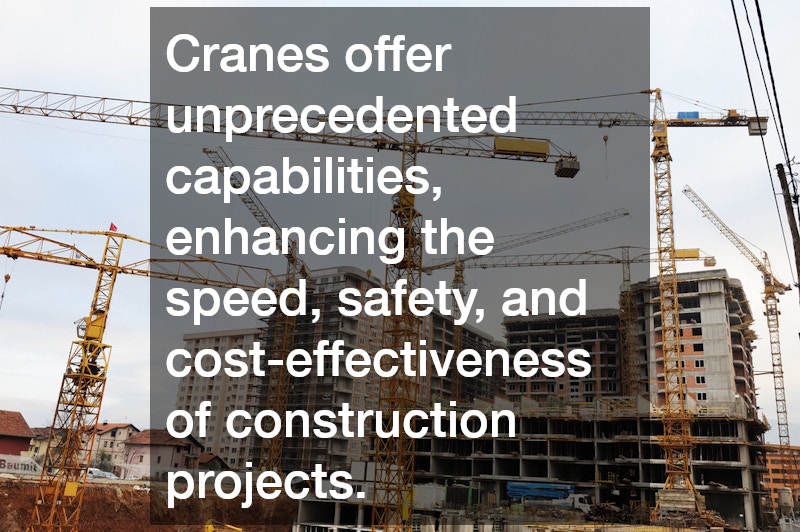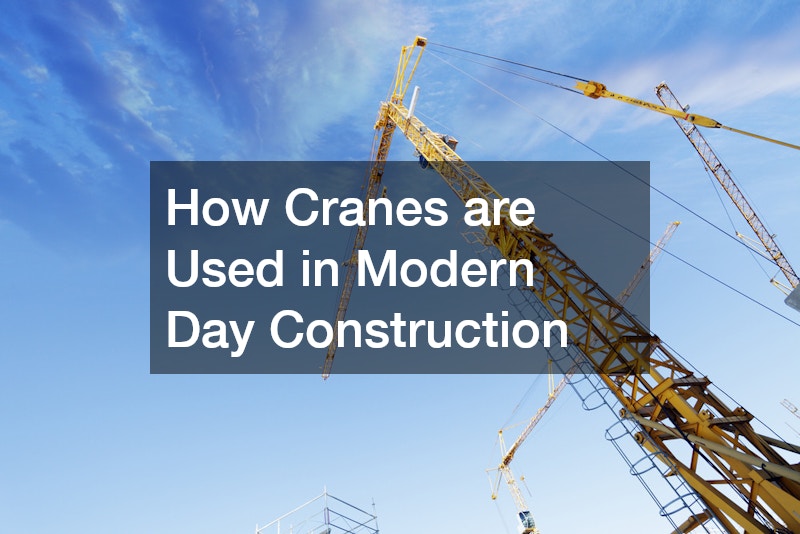
Cranes have become an indispensable part of the construction landscape, offering a blend of strength and precision that is vital to modern infrastructure development. Over the years, cranes have evolved from rudimentary tools to sophisticated machines capable of performing a variety of complex tasks. Today, they play an essential role in executing construction projects efficiently, accurately, and safely.
What are the Different Types of Cranes Used in Construction?
1. Mobile Cranes
Mobile cranes are versatile machines that can be easily transported from one site to another, offering flexibility in construction operations. Their design integrates a strong boom and a rotating superstructure, making them suitable for various types of terrain and projects. Mobile cranes can be further classified into subtypes such as truck-mounted, all-terrain, and hydraulic cranes, each designed to meet specific operational needs.
Truck-mounted cranes are favored for their ability to travel on highways without needing special transportation, enabling quick deployment to construction sites. All-terrain cranes combine the roadability of truck-mounted cranes with the off-road performance of rough terrain cranes, making them ideal for challenging environments. Hydraulic cranes utilize hydraulic systems to lift heavy loads with precision, offering smooth and controlled movements crucial for intricate tasks.
2. Tower Cranes
Tower cranes are iconic in the skylines of cities, being indispensable in the construction of tall buildings and skyscrapers. Their structure consists of a mast, a jib, and a counterweight that provides the stability needed for lifting heavy loads at great heights. These cranes are often anchored to a concrete slab for extra stability and can be configured to grow with the building as construction progresses.
They feature an impressive combination of lifting height and capacity, making them ideal for projects where altitude is a significant factor. Tower cranes are known for their efficiency in moving materials across wide working areas, from one point to another, with precision. Additionally, operators control these cranes from a cabin high above the site, offering a clear overview of the project area and ensuring accurate positioning of materials.
3. Overhead Cranes
Overhead cranes, often seen gliding across factory ceilings, provide exceptional support for in-house construction and manufacturing operations. These cranes operate on two horizontal runways built into the supporting structure of a facility, allowing them to lift and move loads along a single axis. Commonly referred to as bridge cranes, they are invaluable in large industrial facilities where space constraints limit ground mobility.
In construction, overhead cranes facilitate the internal movement of heavy materials such as steel beams or other prefabricated components, streamlining the process of building assembly. Their ability to handle heavy loads with great precision enhances productivity while ensuring the safe transport of materials. Overhead cranes are particularly beneficial in environments where the risk of damage to surrounding structures is minimized due to elevated operations.
How Do Cranes Improve Efficiency in Construction?
1. Speed and Precision
In modern construction, cranes are pivotal in enhancing operational speed and precision, significantly impacting project timelines. Their ability to lift, transport, and position materials quickly and accurately improves productivity on construction sites. By leveraging cranes, construction managers can adhere to tighter schedules without compromising on quality or safety.
The precision of cranes allows operators to place heavy structural components exactly where they are needed, reducing the likelihood of errors. Such accuracy is crucial in complex projects, where misalignment can result in costly delays and rework. Furthermore, cranes can handle a wide variety of materials with different weights and dimensions, offering diverse applications across construction projects.
2. Safety Enhancements
Safety is a paramount concern in construction, and cranes contribute significantly to creating safer working environments. With cranes taking over tasks that would conventionally require manual labor, the potential for accidents resulting from human strain is reduced. Cranes are equipped with various safety features, such as load moment indicators and anti-collision systems, which guard against overloading and prevent collisions.
Operator training is another critical component, ensuring that cranes are handled with the utmost care and expertise, adhering to safety protocols. The adoption of remote-operated cranes can further enhance safety by removing the operator from hazardous environments. Additionally, regular inspection and maintenance of crane equipment are mandated, ensuring any mechanical issues are addressed proactively.
In summary, cranes are indispensable to modern construction, serving as a transformative force that bridges the gap between architectural vision and structural reality. As technology evolves, cranes continue to offer unprecedented capabilities, enhancing the speed, safety, and cost-effectiveness of construction projects. Looking forward, innovations in crane technology promise to further empower the construction industry to reach new heights and meet growing infrastructure demands with ease.
.





